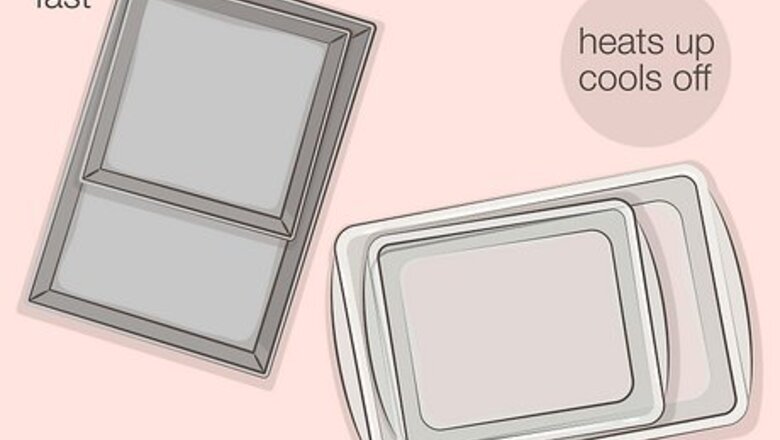
views
- Go with a metal baking pan to get faster heat transfer, which enhances browning, rising, and cooking foods through more quickly.
- Choose a glass baking dish to observe browning along the edges and to keep dishes warm longer after they’re done.
- Generally speaking, use metal if a recipe calls for a baking pan, and glass (or earthenware) if it calls for a baking dish.
- Add 25 °F (15 °C) and 5 minutes per 30 minutes of baking time to switch from metal to glass, and the reverse to go from glass to metal.
Metal vs. Glass—What’s the #1 difference?
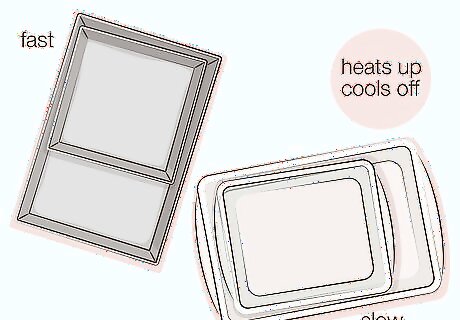
Metal heats up faster and cools off faster than glass. Metal’s quick heat transfer makes it ideal for getting good browning when you’re baking or roasting, and when you want an item (like a batter) to cook through quickly. Glass, meanwhile, takes longer to transfer heat to the food, but also holds heat much longer after baking. This makes it better for foods with longer baking times and items (like casseroles) that you want to keep warm for a while. Metal pans also tend to have a more angular shape, making them better for cutting and lifting out squares or slices of baked items. Glass dishes usually have a more rounded shape, which is good for scooping out servings with a spoon. On the downside, metal can react with acidic foods, while glass can crack or shatter at temperatures above 425 °F (218 °C).
When to Bake in Metal
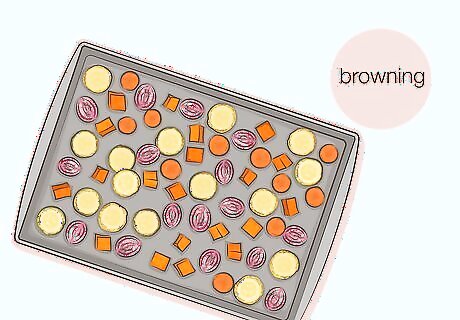
Use metal to heat foods faster and get more browning. If you’ve ever touched the hood of a car on a sunny summer afternoon, you already know that metal heats up fast! Metal baking pans heat up very quickly and transfer that heat to whatever you’re baking, which leads to faster and deeper browning around the edges. This makes metal ideal for roasting vegetables, for example. Also, just like a dark-colored car hood gets hotter faster than a light-colored one, dark-colored metal pans heat up faster and transfer more heat than light-colored pans. Even when browning isn’t your primary goal, like when baking cakes or brownies, metal is the best choice when you want the center of the food (such as a batter) to cook through more quickly. You’re more likely to end up with a cake that’s done around the edges but not in the middle if you use glass, which doesn’t transfer heat as fast.
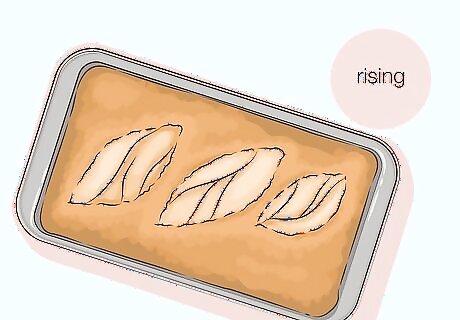
Choose metal for items like breads that need to rise. Because metal heats up and transfers heat more quickly, it efficiently heats up the gasses trapped in foods like bread dough. This, in turn, causes the dough to rise more quickly and evenly. So metal is the way to go with breads, cakes, souffles, and other foods that you want to rise while baking. You’re more likely to get a cake that “craters” in the middle if you use glass instead of metal, for instance. Go with metal loaf pans, not glass.
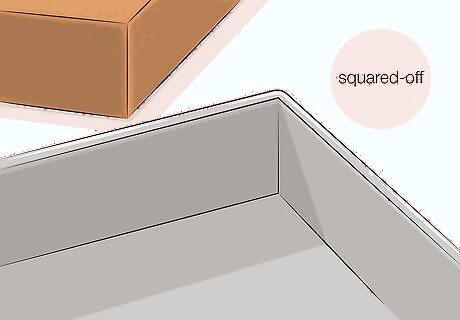
Bake with metal to get squared-off pieces in the corners. While glass baking dishes need to have rounded corners and bottom edges for safety and structural integrity, metal pans usually have squared-off edges and corners. This means that every slice of your cake can have the same photo-shoot-ready appearance. Straight edges also make it easier to lift out slices of baked items in one piece.
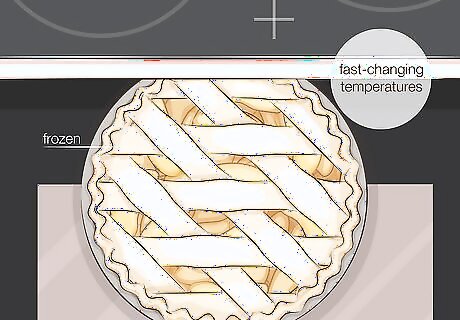
Opt for metal when using high or fast-changing temperatures. While it’s true that a thin sheet pan may temporarily warp or buckle under high and/or fash-changing temperatures, sturdier metal baking pans can hold up to these extremes. Even the best-made glass dishes, on the other hand, may crack or even shatter under such conditions. If you have a homemade pie in the freezer that you want to put straight in the oven, for instance, it has to be in metal, not glass. Metal pans can be placed under a broiler, while glass cannot. In fact, most glass dish manufacturers advise against using glass at temperatures above 425 °F (218 °C). There is one fast-heating situation in which glass is a must, though: don’t put a metal pan in the microwave!
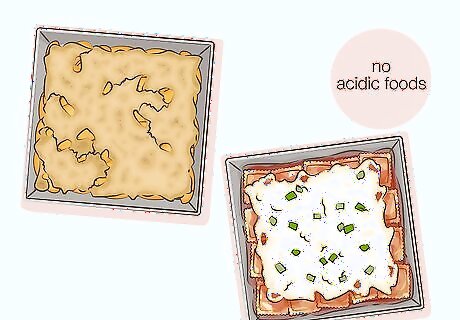
Avoid baking acidic foods like tomatoes or fruits in metal. Unlike glass, metal reacts with the acids in certain foods, which can leave you with metallic-tasting peach cobbler or baked ravioli in marinara sauce. Generally speaking, the more tomato- or fruit-heavy your recipe is, the more important it is to use glass instead of metal. Keep in mind that this reaction is only an issue if the tomatoes or fruits are touching the metal. It’s okay to bake fruit pies in metal, for instance.
When to Bake in Glass
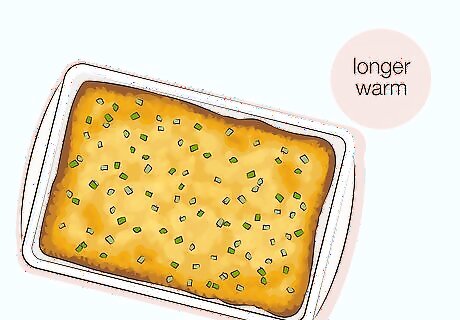
Bake items like casseroles in glass to keep them warm longer. Glass baking dishes take longer to heat up than metal pans, but they also hold onto heat longer. This is a welcome feature when you’re trying to keep a casserole or cobbler warm at a picnic or dinner party. While a metal pan might cool off in 10 minutes, a glass dish might take a half-hour. This is one reason why you’ve probably never heard of anyone baking cookies in a glass dish—when cookies are done, you want them to cool off quickly so they don’t end up over-done. Glass is essentially made from melted sand, so think about how the sand on the beach takes a while to heat up on a sunny morning but stays toasty well after the midday sun has passed.
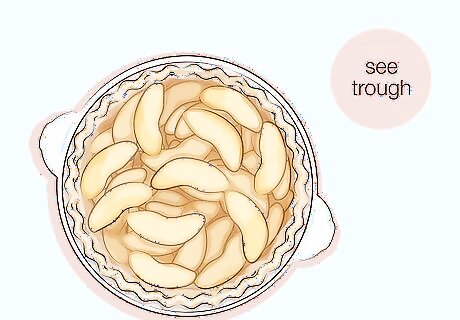
Use glass for an item like pie so you can see how done it is. While you can definitely bake a pie in a metal pie pan, you’ll be left having to guess how brown the sides and bottom of the crust are getting. With a glass pie dish, you can see it with your own two eyes! This feature is especially helpful if you’re trying a new recipe or are new to baking in general. If you’re having a problem with your pie crusts getting too brown before the filling in the center is done, try switching from metal to glass. (Using a pie shield also helps.)
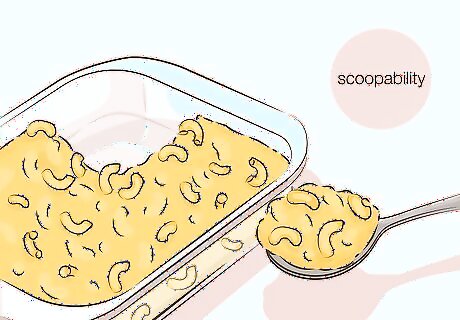
Take advantage of the “scoopability” of glass’ rounded edges. Sure, the straighter edges and corners of a metal pan are better when you’re trying to lift out slices of cake or brownies. But when you’re scooping out servings of mac and cheese or bread pudding with a spoon, rounded edges are a big advantage. That way, you don’t end up leaving some of the good stuff behind!
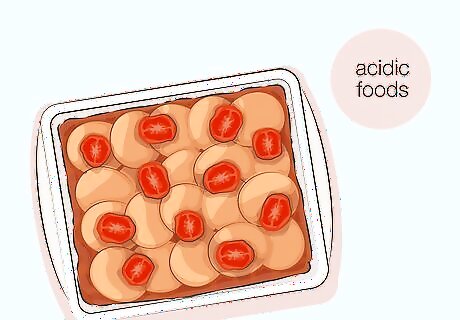
Select glass for acidic foods, since it doesn’t react to them. No matter how much tomato or fruit is in your recipe, a glass dish will never react and create off flavors or colors. So, if you’re baking any type of tomato sauce- or fruit-heavy dish (in which the sauce or fruit touches the baking vessel), choose glass instead of metal. Another benefit to using glass here—it’s easier to scrub clean (or put in the dishwasher) when some of that tomato or fruit inevitably scorches on the sides and bottom of the dish!
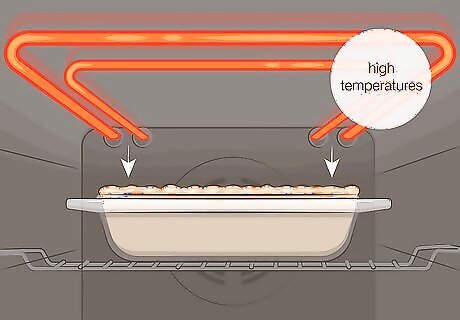
Don’t use glass at high or rapidly-changing temperatures. Glass dishes are designed to withstand typical baking conditions, not extremes. For example, as a general rule of thumb, avoid using glass at temperatures above 425 °F (218 °C). Also, avoid using glass under a broiler, and don’t transfer glass straight from the fridge to the oven. Instead, let cold glass come to near room temperature before putting it in the oven. Glass baking dishes can’t be used on the stovetop either, but they are safe to use in the microwave. Glass will crack or shatter if exposed to temperature extremes. If a glass dish has any chips or cracks, don’t use it for baking at any temperature.
Recipe Adjustments & Examples
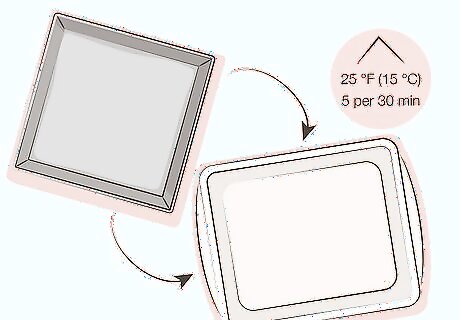
Adjusting a recipe from metal to glass: If your recipe calls specifically for metal, or calls for a baking pan—which usually means metal—you should make some alterations in order to use glass instead: Increase the temperature by 25 °F (15 °C). Increase the baking time by roughly 5 minutes per 30 minutes. For example, if your recipe calls for baking at 375 °F (191 °C) for 60 minutes, adjust it to 400 °F (204 °C) for 70 minutes (but check often after 60 minutes).
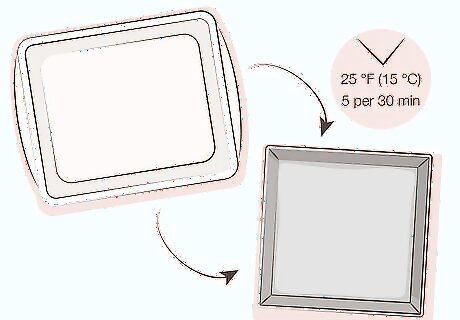
Adjusting from glass to metal: If your recipe recommends baking in glass or in a baking dish—which typically means either glass or stoneware—alter the recipe slightly in order to use metal: Decrease the temperature by 25 °F (15 °C) Decrease the baking time by roughly 5 minutes per 30 minutes. So, if the recipe calls for baking at 400 °F (204 °C) for 60 minutes, go with 375 °F (191 °C) for 50 minutes (although it may take longer).
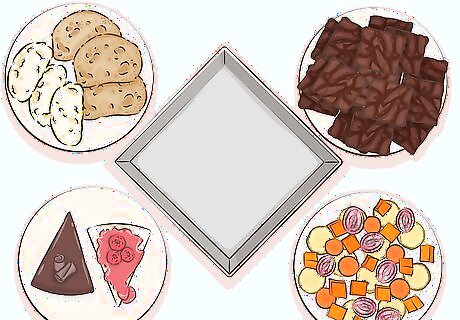
Recipe ideas for metal: Because it transfers heat quickly, metal is best for dishes that need to rise, cook through fairly quickly, or brown on the outside. Grab a metal pan for any of the following recipes: Brownies Chocolate cake Cheesecake Banana bread White bread Roasted vegetables
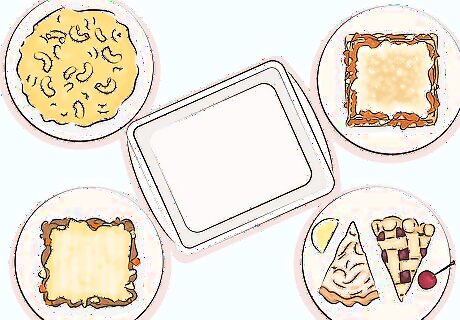
Recipe ideas for glass: Glass is best when you want steady, lasting heat and a clear view of doneness around the edges and bottom of the dish. Go with glass for any of these recipes: Cherry pie Peach cobbler Lemon meringue pie Lasagna Baked mac & cheese Shepherd’s pie




















Comments
0 comment